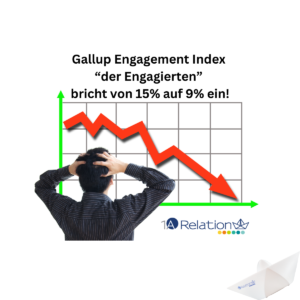- There are several reasons. The old ERP or CRM system is no longer being developed by the manufacturer. The costs for the current CRM solution are spiraling out of control. Usage is far too low. Thus, the promised or expected benefits for the company cannot be realized. The capabilities of your CRM system are limited, or it is too powerful and inflexible.
- How do you create enthusiasm and acceptance among users for CRM?
The users – here the key users – are involved from the beginning. That means in the selection, in the decision-making, in the choice of service provider, in process optimization, and in formulating software requirements.
Another factor for customer acceptance is intuitive operation. This only becomes apparent during use. An application that is presented excellently does not guarantee employee acceptance. It is only when they themselves engage “voluntarily, more, and increasingly intensively” with the product, its use, and data maintenance. In short: When the usage rate is above 50% of rented/purchased modules. AND, when more than 75% of employees who have a license regularly use the product.
- What project management method is used for CRM implementation in the company?
How is the waterfall method defined?
A waterfall model is a linear (non-iterative) approach model, particularly used for software development, organized in consecutive project phases. The results of each phase serve as binding requirements for the next deeper phase, similar to a waterfall.
How is the agile method defined?
The Agile method has various manifestations, such as Scrum, Design Thinking…
One could start with the pattern example of a customer journey and gradually optimize the processes along this customer journey. This primarily involves an approach that puts the customer and their touchpoints at the center. An agile method can be helpful for this purpose.
We once had to accompany a webshop project. The implementation did not go very smoothly, so we were called in. After a short time, it became clear: It was a mix of waterfall and Scrum, with the bad elements of each method coming together.
First, we defined a method that was simpler and more understandable for all parties involved. Just because you’ve heard of Scrum doesn’t mean you’re a Scrum Master.
How does a customer successfully introduce a software product?
This is a difficult question. Scholars, experts, and practitioners argue about it. There is no one-size-fits-all solution. Although it is often talked about. Yes, it is even promised. In theory, this may be true. But in practice, many things look different. We will now examine this in the answers to the many questions.
One thing is important: CRM strategy is not a project. Rather, a strategy pursues long-term objectives. These can be adjusted during an introduction as new insights emerge. There are always new insights. And these can certainly lead to adjustments in CRM strategy.
It is a fallacy to think that the new CRM software only serves marketing, sales, and service. A successful CRM implementation is achieved when the CRM system is integrated into the entire company. Data and information are collected in the CRM solution and then redistributed to those who need this information in a decentralized manner. And this can also be reception or accounting.
Can’t you just buy/rent the CRM system off the shelf and get started?
That would be nice. But most products promise the customer a standard software. However, the so-called standard looks completely different for each provider. That is why a selection process like the one we offer is important. Here we work out the differences. This shows how far the respective standard is from your current and future processes. The winner is the company that comes closest to the specifications.
How do you create enthusiasm and acceptance among users for CRM?
The users – here the key users – are involved from the beginning. That means in the selection, in the decision-making, in the choice of service provider, in process optimization, and in formulating software requirements.
Another factor for customer acceptance is intuitive operation. This only becomes apparent during use. An application that is presented excellently does not guarantee employee acceptance. It is only when they themselves engage “voluntarily, more, and increasingly intensively” with the product, its use, and data maintenance. In short: When the usage rate is above 50% of rented/purchased modules. AND, when more than 75% of employees who have a license regularly use the product.












